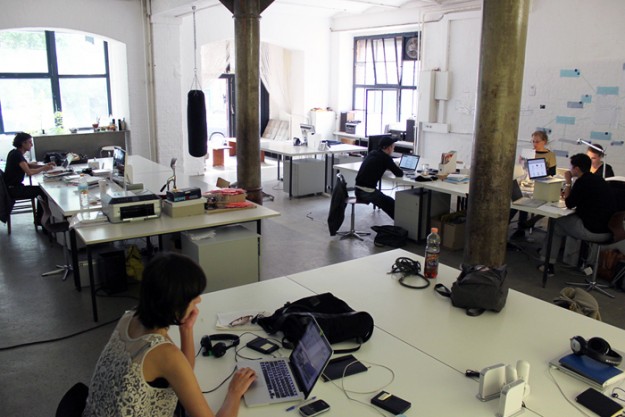
Bodin Danielsson is a researcher at Stockholm’s KTH Royal Institute of Technology School of Architecture & Built Environment and Stockholm University’s Stress Research Institute, who just co-published a study showing that certain office designs breed discontent among co-workers. I caught up with her recently to talk more about how design affects work.
Are there any changes in office design over the last decade that you find particularly striking?
In general employers and management are showing a greater interest in office design, but also in the work environment. They see office design as a way to reinforce one’s brand — both internally and externally. And there is a greater awareness of the physical work environment as a tool to motivate people, and to prevent workers from getting sick. When I started, work environment was considered boring — now it has become “sexy”, so to say. Good work environment and attractive office design are no longer seen as mutually exclusive.
It seems like there are a lot of reports about how detrimental open office spaces are for productivity, and the theme that keeps emerging is a lack of perceived privacy. What’s your take on this?
Yes, studies have shown that unwanted sound, or noise, reduces productivity by about 30 percent, depending on the cognitive demands of the work people are doing. In open plan layouts there is a greater risk of noise problems, but research also shows that social coherence and affinity increases, too. However, this depends very much on the quality of the design and choice of office type.
Are there some positive trends in office design?
Yes. There is a growing awareness of the importance of a good work environment, that a good work environment does not have to be ugly. The reduced emphasis on face time (thanks to ICT) is also good; it gives the individual more personal control. Productivity no longer requires being in the office all the time.
What is one of the most ambitious and exciting design concepts you are aware of?
There are a few new, interesting office designs emerging now — I discuss these in detail in a newly-published book called “Vad är ett bra kontor?” (editor’s note: that’s Swedish for ‘What is a good office?’). But basically, I find the project office and the lean-based office design to be the most interesting office designs at the moment combined with the new approach applied to cell-office that is coming now.
Noise seems to be one of those things that management doesn’t think about until a new office space is up and running, then it’s kind of a situation where people either thrive on it or hate it. What are some of the innovative approaches you’ve seen for dealing with noise?
There are different solutions to this – you can have people that need to talk go to specific areas that allow talk, you can also work with different types of material in flooring and ceiling that absorbs noise. How you group people is also very important – all different dimensions have to be considered.
There’s also so-called “sound showers” where you can stand and have a telephone conversation or, if you have larger sound shower, where you can have furniture set up inside. The idea is that you don’t need to design a room to make a space that absorbs sound. But to be honest, the old solutions are not bad. The problem is that designers don’t know how to use them, that is, how to design in order to make a good sound environment, so to say. In my opinion this is a very important problem among architects and interior designers.
Cube farms are popular in the US, but not here. What’s going on with that?
We see cubicle often in American and British office environments – there privacy is a big thing. Mainly because management have a greater need for surveillance in these culture, as there is less trust between employer and employees there. Status is in these countries also highly related to physical privacy, much more there than in Scandinavia.
Also it might be more important there since the physical work environment often is bad in offices in both the US and UK. In Scandinavia, a lot of money has been put into the physical work environment; however, in the US and UK what’s more important is a bigger pay cheque. There is also traditionally more focus on the work group in Scandinavia than on the individual.
David Callahan
Read Christina’s study, The relation between office type and workplace conflict: A gender and noise perspective
Journal of Environmental Psychology
Volume 42, June 2015, Pages 161–171
Christina Bodin Danielssona, Lennart Bodinc, Cornelia Wulffd, Töres Theorella
DOI:10.1016/j.jenvp.2015.04.004
